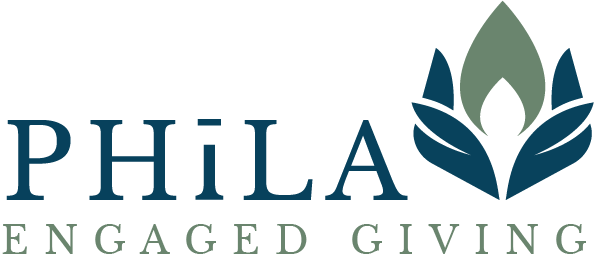By Jen Shafer, ideas42
Black woman in yellow cardigan carrying a basket of produce. Photo by Kampus.
Donors receive a constant stream of requests for their attention and money. Fundraisers know this, and so they engage in an arms race of sorts, asking more often or more creatively for donors’ support. If the volume of these requests gets too high, it’s reasonable that donors would simply tune it all out.
When that happens, smaller and equity-focused organizations are often the first to lose out. For example, today Black-led nonprofits only receive 1–2% of the billions of dollars in annual funding provided by foundations and donors.
That, of course, is a shame for everyone—donors want to support causes they care about, and nonprofits want to tell their story and connect with their communities. One question that could benefit everyone is: How can donors find smaller nonprofits that align with their values?
This is the question our team at ideas42 wanted to explore through a recent collaboration with Charity Navigator. We started by considering Giving Season, that humming driver of philanthropy spanning the days between Thanksgiving and New Year’s Day. We know that curation—that is, giving donors a tailored set of recommended nonprofits—can help donors connect with worthy nonprofits. Additionally, we have learned through our research that GiveLists are a powerful tool to increase giving, and the curator (and credibility of that curator) makes a big difference.
We wanted to take it one step further and explore how curation could encourage donors to give to smaller, equity-focused organizations that too often get lost amid the noise.
This question is particularly relevant for rating or aggregator platforms, financial advisors, or even individuals with specialized knowledge about the problems facing an underserved community. Sharing this knowledge with others by giving recommendations can increase the salience of worthy organizations and help donors cut through the noise.
Based on the lessons we learned along the way, here are our top three tips on curating charitable giving recommendations.
1. Remember why donors need curation.
Two-thirds of donors wish they could give more to causes they support, but there are roughly 1.5 million nonprofit organizations in the U.S. to choose from. Donors experience constant choice overload when selecting a new nonprofit to support, as many organizations are worthy, and it’s difficult to gather enough information to make a decision (or even to determine what constitutes “enough” information).
This uncertainty can dull the warm glow of giving, and we know that uncertainty can make people less generous, as they use ambiguity as a reason not to give. Curation, then, can help donors feel good.
2. Set your criteria.
Start by considering data availability—what data can be found easily through research or existing tools (like Candid’s demographics API or the Lilly School Equitable Giving Lab)? Then, prioritize characteristics that will signal trust and will help donors map differences between charities. For example, the location of an organization’s headquarters and annual budget could help distinguish a local, grassroots organization from others working in the same space.
Resist the urge to to select the perfect selection criteria. Consistent recommendations of lesser-known organizations from trusted sources can create systemic change. Don’t fall victim to zero risk bias, which leads us to seek to entirely eliminate risk rather than choosing options that present some potential risk but a greater opportunity.
3. Make your list.
Next, put your strategy to the test—which organizations do you want to elevate now? Which organizations might you elevate in the future? When creating the list, you don’t have to pick just one organization to recommend. We know that providing donors with multiple organizations can increase giving, and we recommend including 3–5 options, based on our work with GiveLists.
As you prioritize, do an equity check—consider which nonprofits may not receive as much attention, and ask for community input, when possible. Make sure your criteria work and aren’t too limiting—don’t underestimate the practical part!
Now you might be wondering, what did these tips yield for our team? Which organizations were on our list when we were working with Charity Navigator? Below are the organizations we recommended in our study.
Disaster relief:
Health:
Social rights:
Specific populations:
These nonprofits were selected based on a combination of parameters including who they are and how they operate (e.g., small or medium size with annual revenue under $2 million; founded by and serving Black, Indigenous, or People of Color), as well as their presence on Charity Navigator (e.g., active Charity Navigator profile with a 3–4 star overall rating and completion of the Candid Equity Strategies checklist).
Through this work, we learned that donors want to receive recommendations, that recommendations can help channel support to previously overlooked organizations (recommended nonprofits saw a 20% increase in contributions!), and that offering a donation match can increase the likelihood of making a donation to a recommended organization.
For more on this work and how we plan to build on it, check out this one-pager.
To see the original blog post from Ideas42 and more of their insights, click here.

